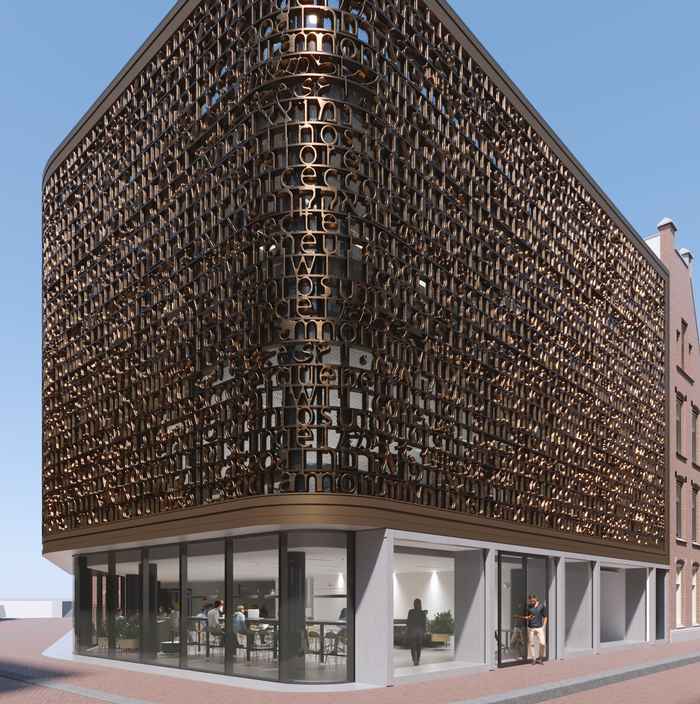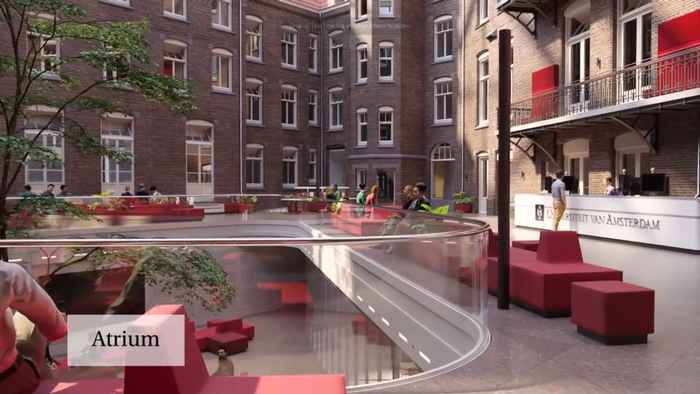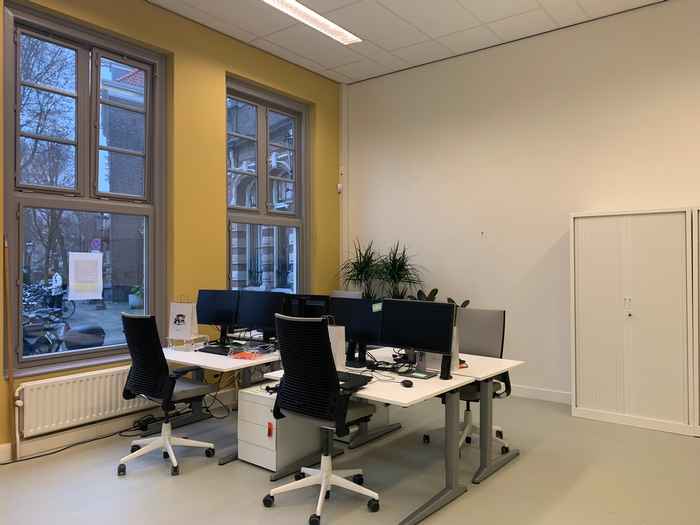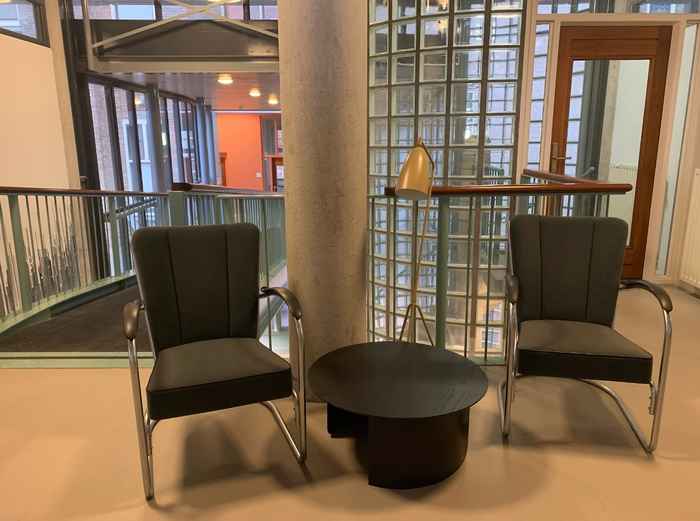Construction of new University Library progressing steadily
Delays and much higher costs offer lessons for University of Amsterdam
16 March 2022
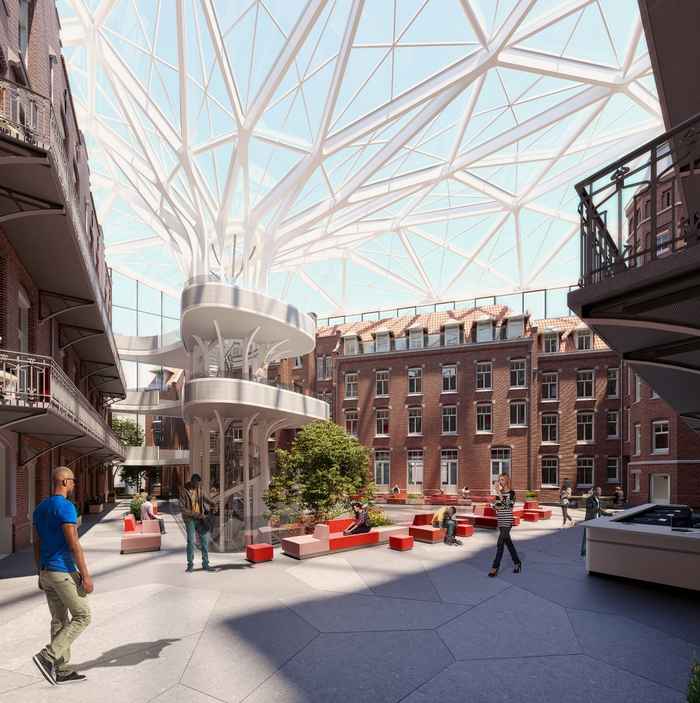
While the building work in the heart of the city centre is coming along steadily, its progress has included the odd bump in the road. Simply getting materials to the site has proved quite challenging. The UvA has been transporting them by canal in an innovative and sustainable way. In addition, the project has proven to be more technically complex than was estimated during the permitting procedure in late 2020. The UvA wants to create a sustainable building with a pleasant living and working environment. This is a complicated and expensive undertaking, as it involves centuries-old buildings that are subject to numerous requirements established by the city for its monuments. Complying with these rules means more time is needed to devise technical solutions. In addition, the state of the old buildings turned out to be even poorer than imagined. Another factor in play is that the market, and the construction market specifically, has never had to deal with finer margins and are also facing higher costs, such as for materials. Taken together, these factors mean that the UB is once again proving significantly more expensive than predicted and will be completed nine months later than previously planned. The total costs forecast for the UB have increased by around 19 million euros, to a total of over 128 million. According to the revised planning schedule, the library will be ready for use in early 2024.
‘These are major setbacks,’ says Executive Board member Jan Lintsen. ‘Both in terms of the further increase in costs and the delay. I naturally would have preferred this not be the case. The reality of this project, however, has shown that the Amsterdam city centre allows for only a limited degree of complexity. Looking to the future, this situation offers us – the UvA – lessons we can apply in the other building projects in the University Quarter. And at the same time, consider the importance of what we are realising here for the students, the scientific community and academic education, as well as for the people of Amsterdam and the city centre itself. Soon, the University Library will be more than a place to house textbooks and study spaces. It will be a place where people come together, the new heart of the UvA. This project also offers us a means of not only preserving a number of characteristic Amsterdam monuments, but doing so in a sustainable way. Anyone visiting the construction site can appreciate how impressive it is to do this kind of structural engineering in historic Amsterdam. We still have a few hurdles left to clear, but the end result will be marvellous.’
The additional costs can be met within the UvA's overall Accommodations Plan and will have no impact on the education and research budget or the budget for other construction projects in the University Quarter.
Soon, two components of the University Library will – literally and figuratively – be the crowning glory atop all the current work. One of these is the roof which will connect the two existing buildings, creating a large amount of new usable floorspace. The other is the façade of the new wing on the Doelenstraat, which will convey the appropriate theme of ‘Words’ by means of a screen made up of letters.
Experiences with the University Library offer lessons for other University Quarter projects
The UvA was well aware of the risks involved in a building project in the heart of Amsterdam, a city constructed on piles. Throughout the course of the University Library project, we have gleaned important lessons from our experiences. The UvA is now applying those lessons to its other renovation projects in the University Quarter.
One such lesson is that national monuments can only be modified to a certain degree. In 2011, the UvA decided to realise its new University Library in the existing monumental buildings on the Binnengasthuis site. The book collection and the study spaces called for twice the amount of floor space than was then present. In the design, this was resolved through the inclusion of an atrium, basement and a new wing. And according to external experts, these additions were feasible and could be achieved within the stipulated budget. In hindsight, however, this was not the case. For the remaining renovation projects in the University Quarter, the UvA will therefore choose functions and designs that fit within the original footprint of the buildings.
Another important lesson is the need to discuss and make agreements regarding the potentially conflicting objectives of the city and university during the design process. The UvA wants to create sustainable buildings that offer practical, usable spaces and a pleasant living and working environment. The city wishes to preserve as many monumental elements of the buildings as possible. To that end, it demands high-quality restoration of monumental balconies, façades and window frames that are outdated and in extremely poor condition. As it now stands, detailed discussions are taking place on a number of points during the construction process, resulting in rising costs and delay. The UvA is naturally eager to prevent this from happening in its other projects.
BG3 ready for use
The Executive Board and staff of the Faculty of Humanities moved into BG3 in mid-March. The interior of this building was recently brought up to modern standards and is, from an architectural standpoint, comprised of two different structures.
